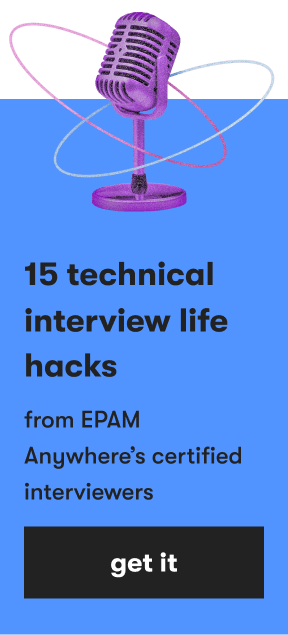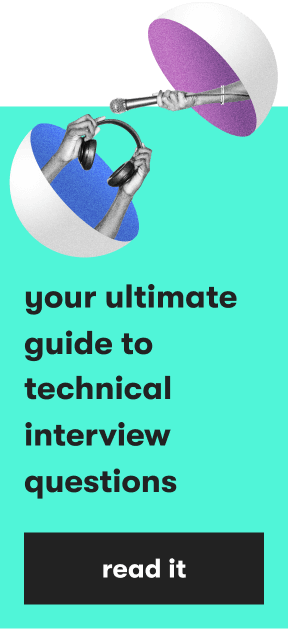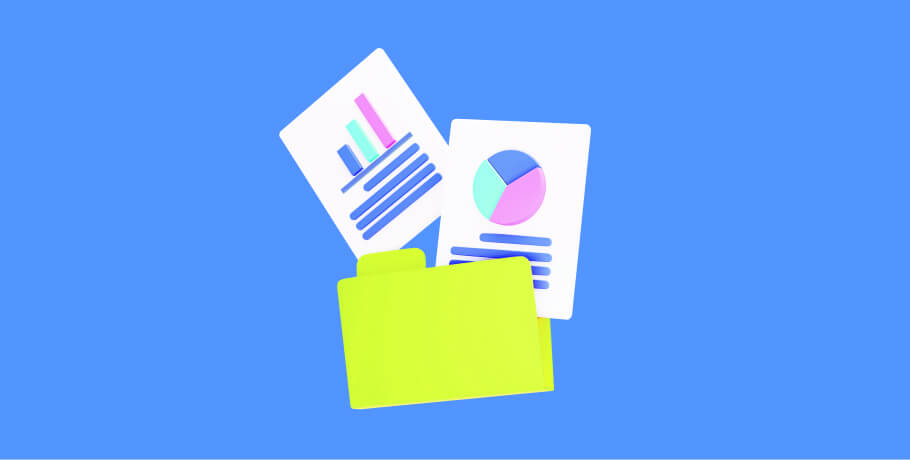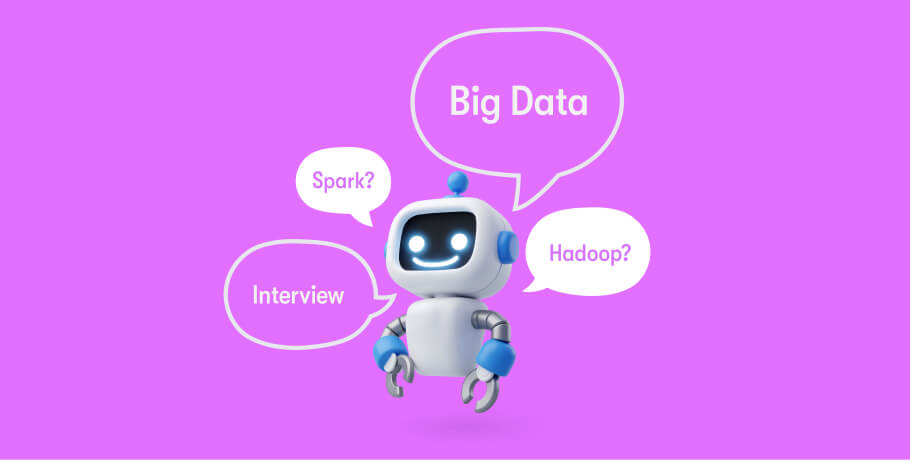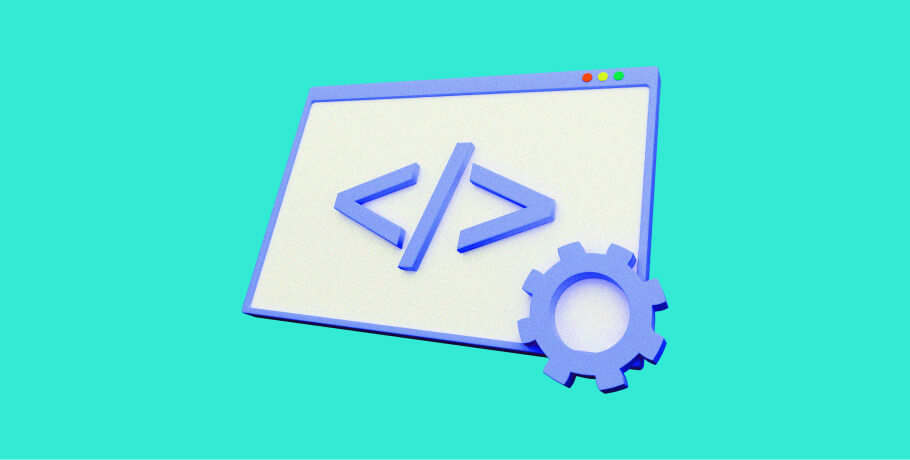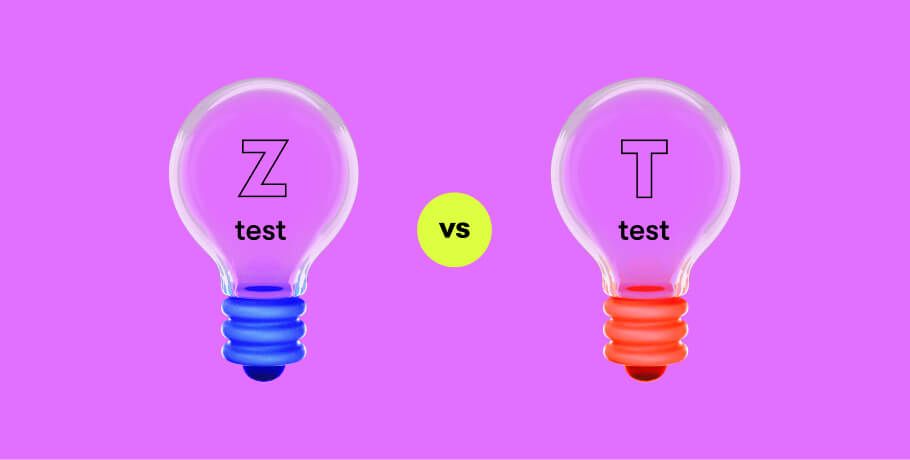Many data analyst interview questions are technical because data analysts need to have strong skill sets related to gathering and interpreting data. If you want a job in this field, you’ve got to be ready to show your skills.
Whether applying for in-person or remote data analyst jobs, the interview can be stressful, mostly because of the fear of the unknown. Below is a list of the most common interview questions for a data analyst position to crush that fear.
Juliana Diaz, EPAM Anywhere’s Data Analyst from Colombia, shares her list of top questions and sample answers below, along with some advice on how to prepare for a data analyst interview.
Top data analyst interview questions and answers
Before the interview starts, the interviewer must know your strengths. In my example, we focused on the following areas:
- SQL as a programming language
- Power BI as the primary data visualization tool
- Tableau as the secondary data visualization tool
- Snowflake as cloud data storage
1. What are good skills to have as a data analyst?
Interviewers will commonly ask about what skills you have that are related to the data analyst position. You can answer it by talking about technical skills like these:
- SQL
- Python
- Power BI
- Tableau
- Statistical analysis
- Microsoft Excel
Soft skills, such as communication, are also important. Focus on your positive characteristics or those of other successful data analysts.
2. How do you know if a data model is good?
Measuring data quality to know that the model works includes six dimensions:
- Data completeness
- Data accuracy
- Data timeliness
- Data consistency
- Data conformity
- Data integrity
Answering this question with at least three of the six dimensions, including data completeness and accuracy, counts as a good answer.
3. Explain the steps involved in data analysis.
Every course or certification on data analytics starts with this roadmap. Here’s a breakdown of the data analysis process:
- Ask
- Prepare
- Process
- Analyze
- Share
- Act
A brief explanation shows that you understand the basics of achieving a successful analytics project. Don’t overcomplicate it.
4. What is the Gartner Magic Quadrant for Analytics and Business Intelligence Platforms?
Gartner’s Magic Quadrant classifies analytics and BI platform vendors into four squares (or quadrants), ranking them by their ability to execute and their completeness of vision. For extra points, you can name the four quadrants:
- Challengers
- Leaders
- Niche Players
- Visionaries
5. Explain the stages of the SQL execution process.
The order in which an SQL statement executes is this:
FROM – WHERE – GROUP BY – HAVING – SELECT – ORDER BY – LIMIT
6. Can you explain the use of Window Functions?
Window Functions are aggregation functions that return a single value per row, instead of grouping and showing a condensed form of the table. It shows all the rows and aggregated values for each data group (window). It follows this syntax:
AGG(Column) OVER(PARTITION BY group of columns ORDER BY column)
Aggregations can be anything from sum to max. You can also use classification functions such as these:
- RANK()
- DENSE_RANK()
- ROW_NUMBER()
- NTILE()
7. Explain the use of CTE (Common Table Expression).
CTEs define a temporary result for a query within a larger query. The temporary query is an execution scope of a statement, such as SELECT, INSERT, UPDATE, DELETE, or MERGE.
CTEs all start using “WITH,” like the example below:
You can use a CTE for many tasks, such as creating a set of rows, calculating a max, or transforming data for the last table.
8. Explain the use of Nested Selects or SQL Subqueries.
A nested select is a query within a query. This is like a CTE but it generates more of a table for information pulls. You can use it to filter out the data from big tables used for JOINS, which can make the query slow.
For example, instead of:
You could do:
Since we know that queries run a “Where” before selects, the query will be more lightweight.
9. What’s the difference between DDL and DML?
Data Definition Language (DDL) in SQL uses the following statements:
- ALTER
- CREATE
- DROP
Meanwhile, Data Manipulation Language (DML) uses these:
- INSERT
- UPDATE
- SELECT
- DELETE
10. How would you limit information that a user sees in Power BI Service?
There are several ways to limit information in Power BI Service. For example, you could create workspaces and allow certain users to view some workspaces. Another way is to use Row-Level Security (RLS) inside a report to limit the information a user sees. Any of these answers will work.
To do this in Tableau, you can use project level permissions. This way, site administrators can control who sees what.
11. What are the different loading modes of data in a Power BI report and why are they different?
These are the three modes of data loading:
- Import uploads a snippet of information up to a date and must receive regular updates. It doesn’t need a constant connection, so it is faster.
- DirectQuery is live information. A query constantly pulls data from the source. DirectQuery is good when data needs to be live. However, if the data must be heavily edited, it can be slow.
- Hybrid is a mix of the two. These reports include both import and direct query tables.
12. How do you edit data (create calculated columns, measures, clean data, etc.) in Power BI vs Tableau?
Power Query you can use in Power BI for data cleaning and row-level calculations, such as rank, additions, and totals. You can also use Data Analysis Expressions (DAX) for detailed analysis, such as percentages and summaries.
In Tableau, you can use Tableau Prep Builder to clean the data and Calculated Fields in Desktop to create measures.
13. Is it possible to allow a slicer to only filter one visual instead of a complete sheet in Power BI?
Yes. You can use the “manage relationships” option found on the format tab of a slicer.
14. What are views in Snowflake and what are they used for?
Views are results of queries that can be accessible as tables. They can facilitate report access, like uniting tables in a view to create one table specific for a report(s). Also, you can handle and build security however you want, so you can delete tables and share information with users.
15. How do you connect to Snowflake using Power BI?
You use the native connector Microsoft provides. The server and the name of the warehouse are required. You can also include a native query, but you would need a database.
Find your data analyst job at Anywhere
By preparing for these data analyst job interview questions, you can ace any interview. So, why not try it on us? EPAM Anywhere has an entire list of full-time remote jobs you could be perfect for. Find your best-matching vacancy and apply for a chance to join our global community.

Explore our Editorial Policy to learn more about our standards for content creation.
read more


